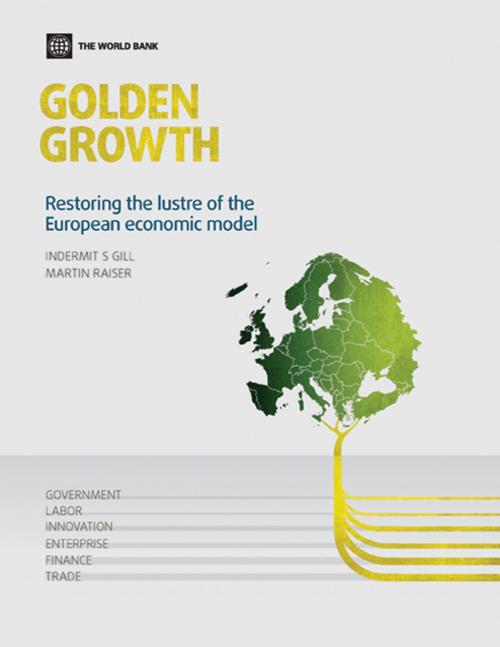Golden Growth: Restoring the Lustre of the European Economic Model
Business & Finance, Economics, Economic Conditions, International, Finance & Investing, Finance| Author: | Indermit S. Gill, Martin Raiser | ISBN: | 9780821389669 |
| Publisher: | World Bank Publications | Publication: | April 27, 2012 |
| Imprint: | Language: | English |
| Author: | Indermit S. Gill, Martin Raiser |
| ISBN: | 9780821389669 |
| Publisher: | World Bank Publications |
| Publication: | April 27, 2012 |
| Imprint: | |
| Language: | English |
The public debt crisis in Europe has shaken the confidence not just in the Euro, but in the European model. Aging and uneconomical Europeans are being squeezed between innovative Americans and efficient Asians, it is said. With debt and demographics dragging down them down, one hears that European economies will not grow much unless radically new ways are discovered. The end of complacency in Europe is a good thing, but this loss of confidence could be dangerous. The danger is that in a rush to rejuvenate growth, the attractive attributes of the European development model could be abandoned along with the weak. In fact, the European growth model has many strong points and enviable accomplishments. One can say without exaggeration that Europe had invented a “convergence machine”, taking in poor countries and helping them become high income economies. World Bank research has identified 27 countries that have grown from middle-income to high income since 1987: a few thanks to the discovery and exploitation of massive natural resources (e.g.: oil in Oman and Trinidad and Tobago), several others like Japan, Hong Kong, Singapore, Taiwan, and South Korea, embracing aggressive export-led strategies which involved working and saving a lot, postponing political liberties, and looking out only for themselves. But half of the countries that have grown from middle income to high income—Croatia, Cyprus, Czech Republic, Estonia, Greece, Hungary, Latvia, Malta, Poland, Portugal, Slovak Republic, and Slovenia—are actually in Europe. This is why the European model was so attractive and unique, and why with some well designed efforts it ought to be made right again.
The public debt crisis in Europe has shaken the confidence not just in the Euro, but in the European model. Aging and uneconomical Europeans are being squeezed between innovative Americans and efficient Asians, it is said. With debt and demographics dragging down them down, one hears that European economies will not grow much unless radically new ways are discovered. The end of complacency in Europe is a good thing, but this loss of confidence could be dangerous. The danger is that in a rush to rejuvenate growth, the attractive attributes of the European development model could be abandoned along with the weak. In fact, the European growth model has many strong points and enviable accomplishments. One can say without exaggeration that Europe had invented a “convergence machine”, taking in poor countries and helping them become high income economies. World Bank research has identified 27 countries that have grown from middle-income to high income since 1987: a few thanks to the discovery and exploitation of massive natural resources (e.g.: oil in Oman and Trinidad and Tobago), several others like Japan, Hong Kong, Singapore, Taiwan, and South Korea, embracing aggressive export-led strategies which involved working and saving a lot, postponing political liberties, and looking out only for themselves. But half of the countries that have grown from middle income to high income—Croatia, Cyprus, Czech Republic, Estonia, Greece, Hungary, Latvia, Malta, Poland, Portugal, Slovak Republic, and Slovenia—are actually in Europe. This is why the European model was so attractive and unique, and why with some well designed efforts it ought to be made right again.















